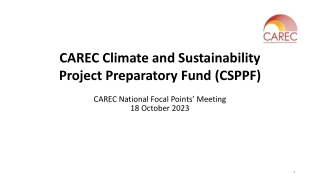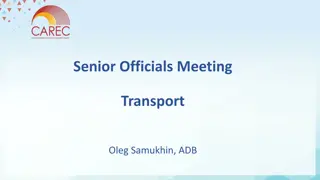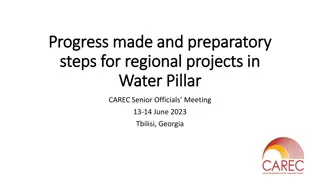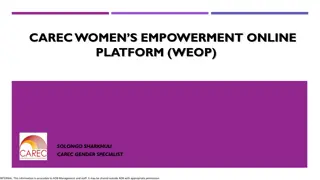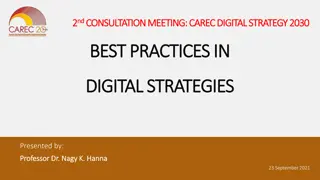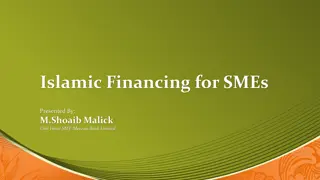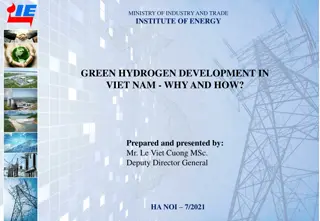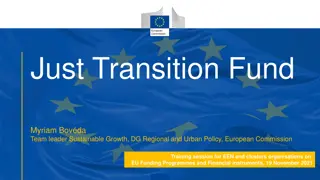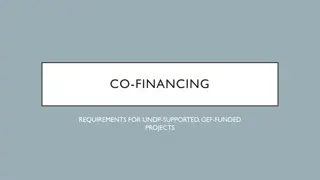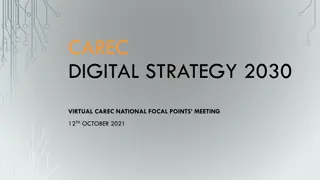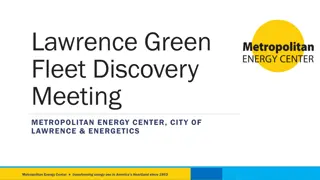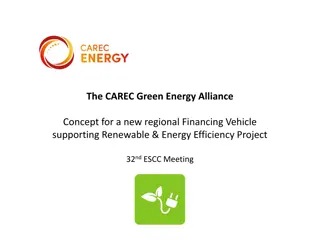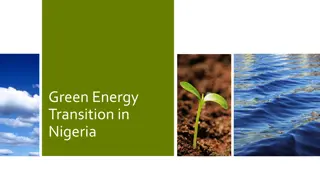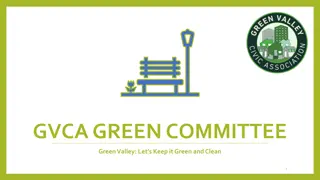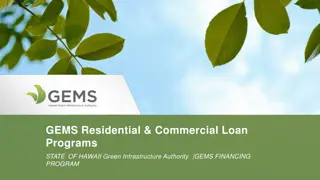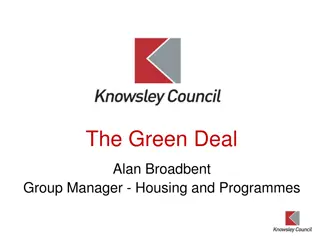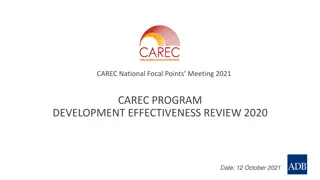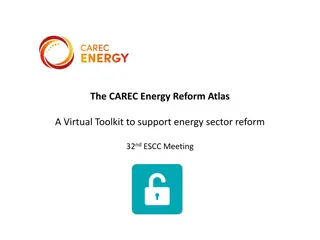CAREC Green Financing Vehicle Concept for Energy Transition
The CAREC region faces significant energy investment needs to transition towards greener energy sources. Despite the availability of global climate finance, various constraints hinder investments in energy efficiency and renewable energy projects. This includes regulatory, technical, financial, and awareness-related challenges. By addressing these issues, the region can unlock substantial opportunities for sustainable energy development.
Download Presentation

Please find below an Image/Link to download the presentation.
The content on the website is provided AS IS for your information and personal use only. It may not be sold, licensed, or shared on other websites without obtaining consent from the author.If you encounter any issues during the download, it is possible that the publisher has removed the file from their server.
You are allowed to download the files provided on this website for personal or commercial use, subject to the condition that they are used lawfully. All files are the property of their respective owners.
The content on the website is provided AS IS for your information and personal use only. It may not be sold, licensed, or shared on other websites without obtaining consent from the author.
E N D
Presentation Transcript
CAREC GREEN FINANCING VEHICLE CONCEPT FOR THE CAREC GREEN ENERGY ALLIANCE JANNAT SALIMOVA-TEKAY, LEAD CONSULTANT CAREC Energy Work Stream 3 11 October 2021 1
RATIONALE: CAREC s Energy Investment Needs CAREC Countries RISE indicators* (2020) The CAREC region is home to some of the most energy-intensive economies. Energy efficiency and renewable energy investments are lagging behind. The commitments under the Paris Agreement are also prioritizing energy transition. The region s cumulative investment needs for greening its energy sector exceed US$ 400 billion, according to the CAREC Energy Strategy 2030.** The current investment levels are at only about a quarter of these needs. Countries Energy Efficiency Renewable Energy Afghanistan Azerbaijan China Georgia Kazakhstan Kyrgyz Republic Mongolia Pakistan Tajikistan Turkmenistan Uzbekistan Source: World Bank, 2020 25 18 31 25 69 74.47 N/A N/A 58 28 22.46 53 26 34 28 47 17 62 42 30 7 33 * RISE Regulatory Indicators for Sustainable Energy is a set of indicators by the World Bank for comparing policy and regulatory frameworks that countries have put in place to support the achievement of SDG7 (universal access to clean energy). ** Excluding People s Republic of China 2
RATIONALE: Global Financing Availability Global climate finance flows 2013/2018 (in US$ billion) The current financial resources available for climate-related projects are vast (see graph). For the CAREC region to claim a fair share of these funds for its clean energy projects, it will require pipelines of well-prepared projects, use of credit enhancement instruments and raising awareness on the region s potential preferably done via a single access platform. 700 612 546 600 472 455 500 388 342 400 300 200 100 0 2013 2014 2015 2016 2017 2018 Source: 2019 Global Climate Finance Landscape, Climate Policy Initiative, 2019 3
RATIONALE: Energy Efficiency Investment Problem Tree Effects Energy Insecurity Environmental Damage Constrained Economic Growth Social Disparities Problem Lack of Investment in Energy Efficiency Policy Constraints Technical Constraints Financial Constraints Awareness Issues Causes Low electricity tariffs Lack of metering Underdeveloped capital markets Absence of awareness campaigns Distorted investment attractiveness perception Lack of savings accounting Insufficient investment size Lack of energy efficiency strategies Banks unable to assess risks Slow behavior change Absence of energy standards Lack of specialized workforce Area of intervention 4
RATIONALE: Renewable Energy Investment Problem Tree Effects Energy Insecurity Environmental Impact Constrained Economic Growth Social Impact Problem Lack of Renewable Energy Investment Regulatory Constraints Technical Constraints Financial Constraints Awareness Issues Causes High grid connection costs Fossil fuel subsidies Lack of well-developed projects Underdeveloped capital markets Large-scale investment size Low technological awareness Absence of emissions trading Deficit of balancing capacities Expensive local currency debt Unattractive support mechanisms Distorted price perceptions Red-tape (land use, approvals) Area of intervention 5
PLATFORM Vision CAREC Green Energy Alliance CATALYTIC TRANSFORMATIVE SUSTAINABLE 6
PLATFORM Benchmarking Benchmarking Analysis IRENA Climate Investment Platform Cities Investment Facility Platform Features GET. Invest Green Energy Alliance FIPEE SOOOF Project Marketplace Project-Investor Matchmaking B2B Social Media/Commun ication features Project Preparation Advisory/Tools 7
PLATFORM Functionality Digital Platform Solution B2B Project Marketplace B2B Community Virtual Matchmaking Project Preparation Support 8
PLATFORM Phased Approach (1/2) Platform evolution phases Maturity Growth Development and Launch Bigger Phase 1 Phase 2 Phase 3 9
PLATFORM Phased Approach (2/2) Functionality and Features by Phase Platform Features Functionality for Phase 1 Functionality for Phase 2 Functionality for Phase 3 Project Marketplace Project-Investor Matchmaking B2B Social Media/Communication features Project Preparation Advisory/Tools Enhanced functionality of the platform s feature Basic functionality of the platform s feature 10
PLATFORM Structure Proposed high-level organizational structure Green Energy Panel Project selection and operational monitoring Strategic direction Secretariat Administrative assistant IT support Marketing and PR 11
QUESTIONS TO THE WORKING GROUP 1. Do you agree with the barriers to EE and RE investments that need to be addressed by a single platform? 2. Do you agree with the proposed functionalities for the CAREC Green Energy Alliance Platform? 3. Do you agree with the Phase 1 organizational structure? 12



